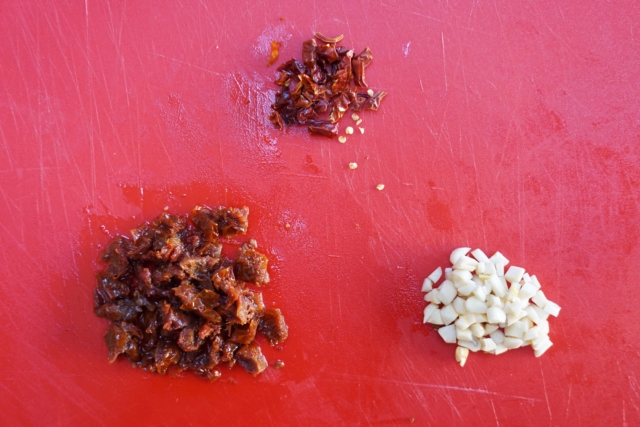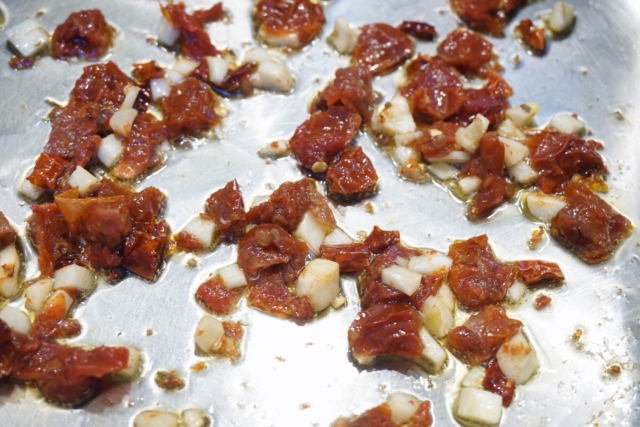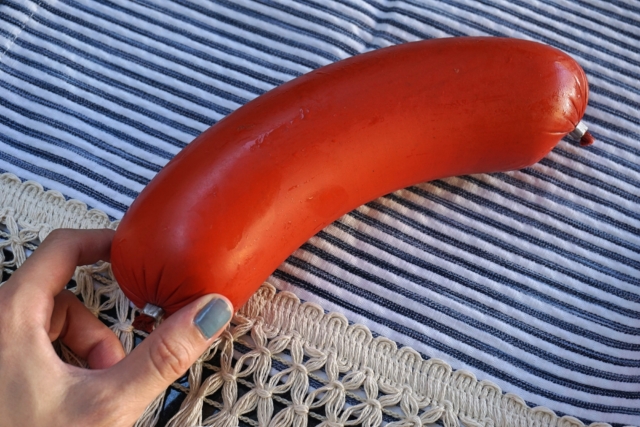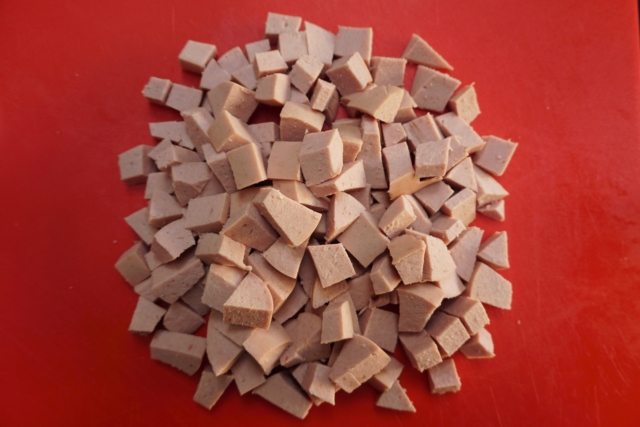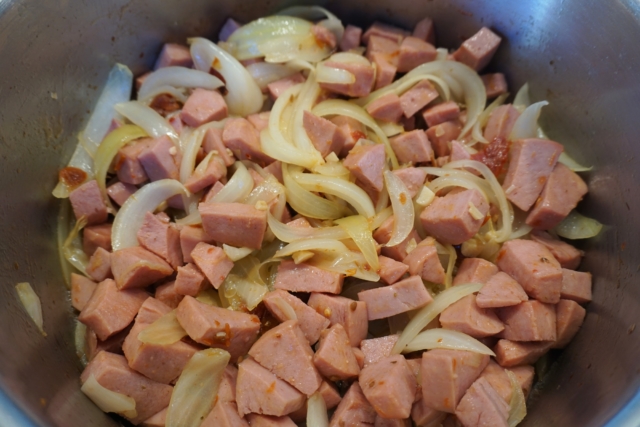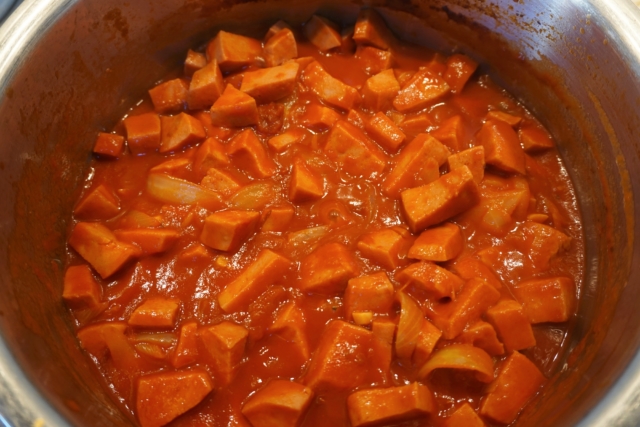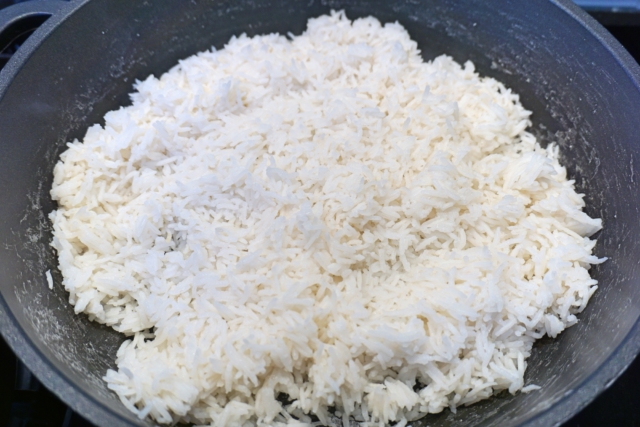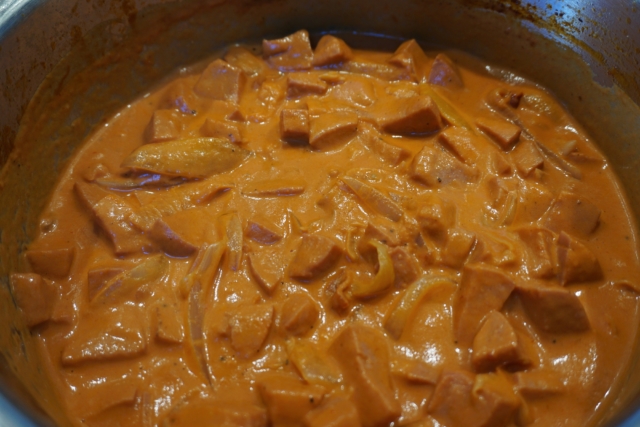Here it is, the first recipe posted on the blog! Who would have thought it would be a Swedish one? Certainly not me, since it was only a little over two months ago that I set foot in Sweden for the first time. We went there to spend time with friends over Easter, but ended up with plenty new food discoveries (I’m not gonna lie and tell you that I hadn’t planned to seek them out anyway..).
Thanks to my newly-won friend Natsuko who lives in Sweden, cooks wonderful dishes and was happy for me to share her recipe online, I will share with you this quick and tasty Falukorv Stroganoff recipe. Skip to the bottom if you’re short for time to hear about the history of the dish, but if you do have a few extra minutes to spare I can guarantee you it will be worth it (plus when you cook this Stroganoff for family or friends you have a nice little true story to tell).
The Swedish Korvstroganoff takes its inspiration from the Russian beef stroganoff dish which you may have heard of or tried in its original form (as commonly defined) or in one of its many variations. Beef stroganoff is usually understood to be a dish of sautéed beef served in a sauce which includes smetana (sour cream) as a central ingredient. Indeed, it does seem as if the only defining commonality between most stroganoff recipes the world over is the quick frying of the meat, whichever meat it may be, and sour cream as a key ingredient in the sauce it is served with.
While in the Russian stroganoff the beef is now usually cut into strips, and served with onions and mushrooms, this was not so from the beginning. Instead the beef was cut into cubes, and onions and mushrooms were not included. If the recipe has changed over time in its place of origin, and is slightly nuanced in each family, and each restaurant, then of course the well-travelled dish will have developed further diverging traditions in other nations as well. Sweden is one such country.
In Sweden stroganoff comes with falukorv. In fact, falukorv is central to the dish. What is this mystery Swedish ingredient? It’s actually a cooked sausage (korv means sausage in Swedish) consisting of grated smoked pork and veal or beef mixed with onion, potato starch, salt, and other spices. It was developed in the city of Falun in central Sweden during the time of the Falu koppargruva (Falun copper mine) in the 16th and 17th centuries. Since the miners, in order to lift the copper out, were in need of strong leather ropes that did not wear out quickly, they decided to make some out of ox skin, leaving them with a lot of meat leftovers. What better thing to do with them than to make sausages?
The recipe for salting and smoking the meat is likely to have been brought to the region by miners from Germany, based on the German Lyoner sausage. This recipe was then revitalized in the 19th century by a Swedish butcher, leading to the modern falukorv found today. Given this history, falukorv has come to enjoy EU TSG (traditional specialties guaranteed) status since 2001, which means that restrictions apply to what may be labeled as “falukorv.” The amount of meat used may not fall short of 45% (although many brands use considerably more) and only potato flour may be utilized as a binding agent.
Another development that came out of the same Falun copper mines is the characteristic Falu red you see on many houses in Sweden today. In order to make ingots, copper was melted and impurities would float up which were thrown away. But the miners noticed that these impurities could in fact be used as paint if they were mixed with water. More so than this, they realized that the minerals in this mixture would be able to better preserve the wood of the houses that were painted with this unique hue of red. In Sweden, as our friend’s relatives have done in the countryside, it is not uncommon to buy a barrel of falu red powder and mix it with water yourself to create the paint for your shed or house.
So now, whenever you see falu red houses in Sweden, or enjoy a Falukorv dish, you’ll be reminded of how the Falun copper mine is not merely a completed episode of the past, but has made its mark on the surroundings and eating habits in Sweden today. With this new association, I even feel peckish when I see a falu red house. But luckily Falukorv Stroganoff is a breeze to make. And here’s how.
Recipe (with pictures)
Falukorv stroganoff with basmati rice
Prep time: 10mins
Cook time: 30mins
Total time: 40mins
Serves: 4

Ingredients:
2 small red dried chillies
2 1/2 dried tomatoes
3 cloves garlic
1 tbsp oil
1 1/2 onions
1 Falu sausage (alternatively bologna, kassler, or even chorizo)
750ml tomato paste
150ml cream (ideally 40% fat)
1tbsp white cooking wine
Black pepper
Pinch of salt
Pinch of sugar
Basmati rice (this type of rice doesn’t stick to the sauce)
Instructions:
- Chop the garlic, dried chillies and tomatoes into small cubes and fry in a pot with oil
- Cut the onions into slices and add to pot
- Peel the Falu sausage and cut it into bite-sized pieces, then add to the pot and cook over low heat for about 15mins until the food is slightly fried
- Add the tomato paste to the pot, mix well and leave it over slightly higher heat with lid on top for about 10mins (it should not boil strongly because you want sauce left at the end of it)
- In the meantime cook the basmati rice as per package instructions
- Turn off the heat and add the cream, black pepper, and white cooking wine
- Leave it over low heat for a few minutes until it boils
- Add a pinch of salt and sugar, then mix well and serve (I added a few mint leaves as garnish)
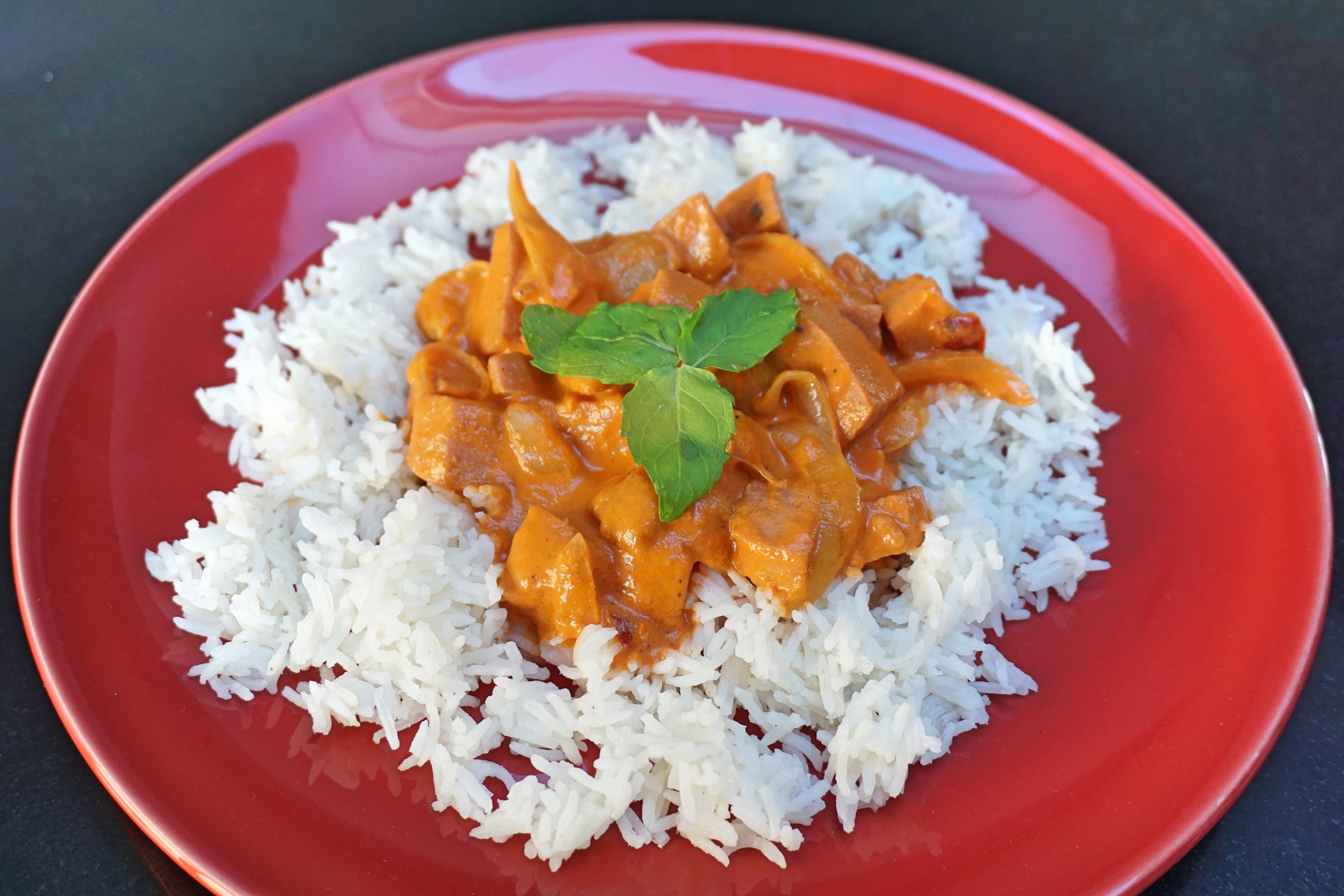
Enjoy!
Recipe (without pictures)
Falukorv stroganoff with basmati rice
Prep time: 10mins
Cook time: 30mins
Total time: 40mins
Serves: 4
Ingredients:
2 small red dried chillies
2 1/2 dried tomatoes
3 cloves garlic
1 tbsp oil
1 1/2 onions
1 Falu sausage (alternatively bologna, kassler, or even chorizo)
750ml tomato paste
150ml cream (ideally 40% fat)
1tbsp white cooking wine
Black pepper
Pinch of salt
Pinch of sugar
Basmati rice (this type of rice doesn’t stick to the sauce)
Instructions:
- Chop the garlic, dried chillies and tomatoes into small cubes and fry in a pot with oil
- Cut the onions into slices and add to pot
- Peel the Falu sausage and cut it into bite-sized pieces, then add to the pot and cook over low heat for about 15mins until the food is slightly fried
- Add the tomato paste to the pot, mix well and leave it over slightly higher heat with lid on top for about 10mins (it should not boil strongly because you want sauce left at the end of it)
- In the meantime cook the basmati rice as per package instructions
- Turn off the heat and add the cream, black pepper, and white cooking wine
- Leave it over low heat for a few minutes until it boils
- Add a pinch of salt and sugar, then mix well and serve (I added a few mint leaves as garnish)

